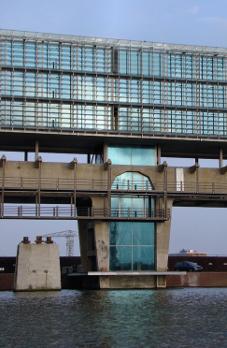Area development: structural bottlenecks
| Function / Domain: | Spatial planning |
| Illustration of: | Structural problems |
Area development is an approach to spatial planning in the Netherlands based on a system innovation. In this approach, public and private partners and residents search for good and affordable solutions for complex planning challenges in an area. It serves as an alternative to the more traditional Dutch top-down planning process that often produces unsatisfactory results.
Because it does not fit in well with the existing regime, the new approach faces various structural problems in the form of obstacles arising from formal rules, routines, standards, culture, perceptions, knowledge etc. The book Nederland Boven Water II provides a good survey of the problems. Here are four examples of structural bottlenecks.
European tendering regime
The EU's tendering regime dating from 1972 does not automatically allow private actors to be involved at an early stage of the planning process. By breaking the area development process into different phases it proved possible to remove some obstacles. But othern formal rules created new uncertainties. In one particular case of area development a Dutch judge queried the right of property developers to build as a result of private land positions. That would seriously frustrate public-private partnership in area development.
Accounting for resources
Partners in area development in the Netherlands often have endless discussions about the allocation of funds. An important reason for this is the method adopted by authorities to account for the funds they spend. The duty to account for predefined results is difficult to reconcile with the process of area development, which takes a period of many years during which it is often necessary to adapt plans to new developments. There is therefore a need for public funds for area development, to which relevant authorities contribute funds/land and/or properties pro rata. That would allow for more flexibility in the implementation of the plans.
Government's accounting system
The Dutch government's accounting system is another obstacle. Under that system, the government's investments are entered in the accounts at the time of the decision. In other words, there is no depreciation over time for long-term investments. Private investors, such as banks and property developers, operate differently. The result is that the central government and market actors price risks differently and weigh factors differently when making investments. A different government accounting system for this type of long-term investment would help.
University culture and context
A last example of structural barriers is the culture and rules, which prevent universities from addressing practical problems relating to area development. The university culture focuses on academic problems and scientific output and is less concerned with practical needs. This was the reason why a research programme of Habiforum concerning area development generated far less than expected in practical terms. The practice therefore also benefits from an expansion of university horizons.
Sources
Van Rooy, P. (2009). Nederland Boven Water praktijkboek gebiedsontwikkeling II. Habiforum, Gouda en Nirov: Den Haag.
